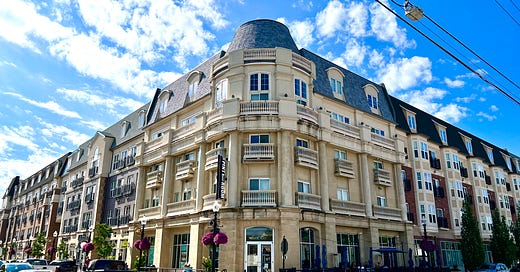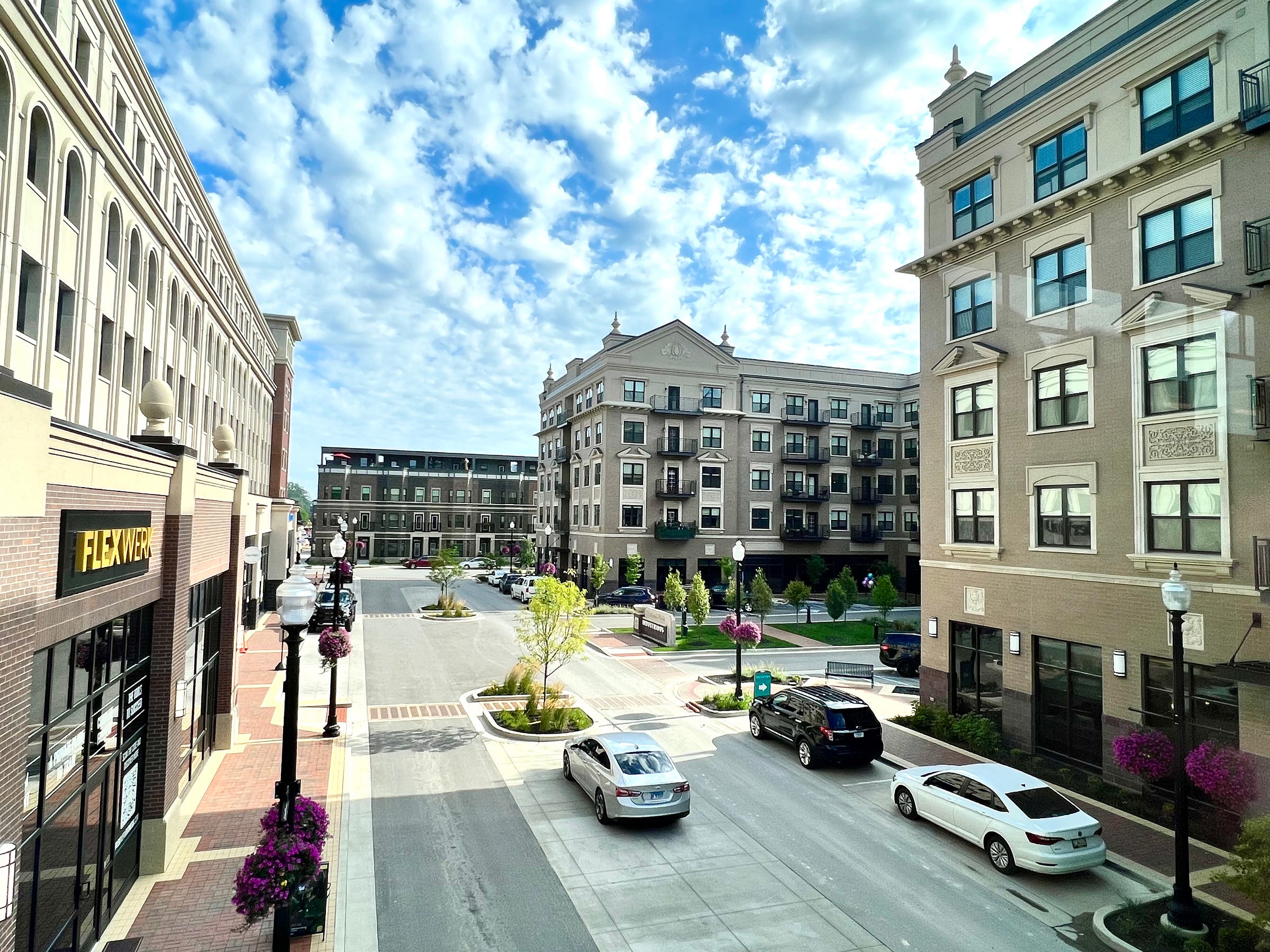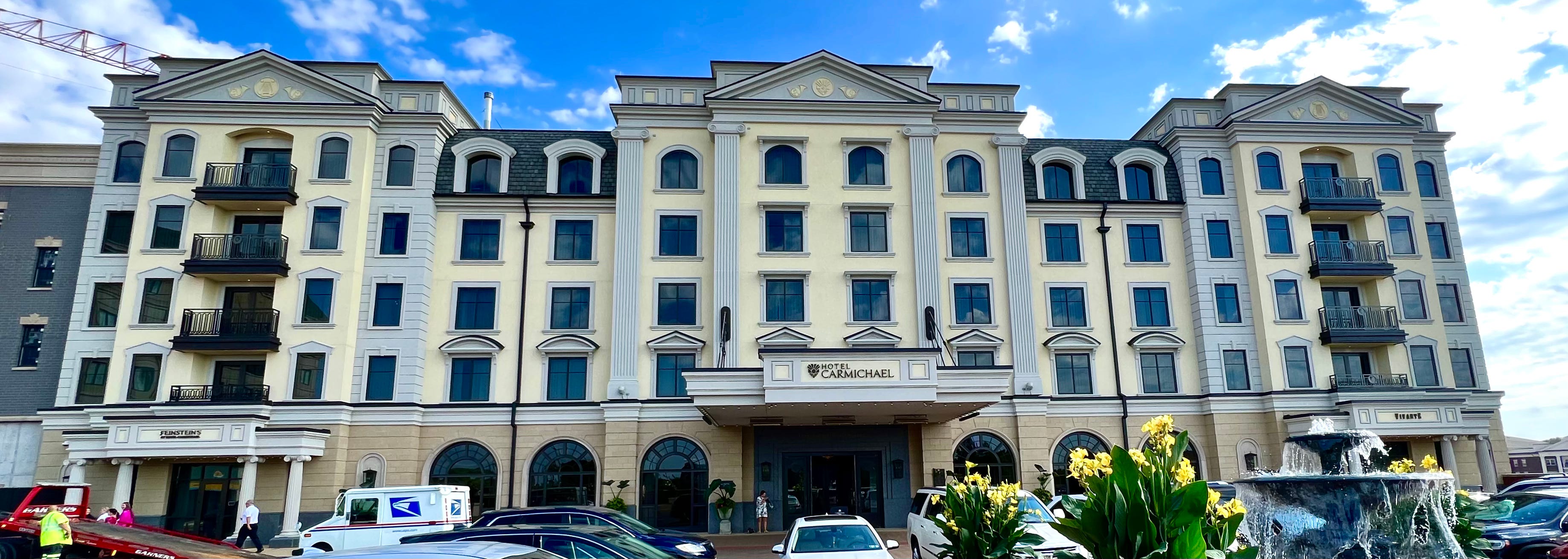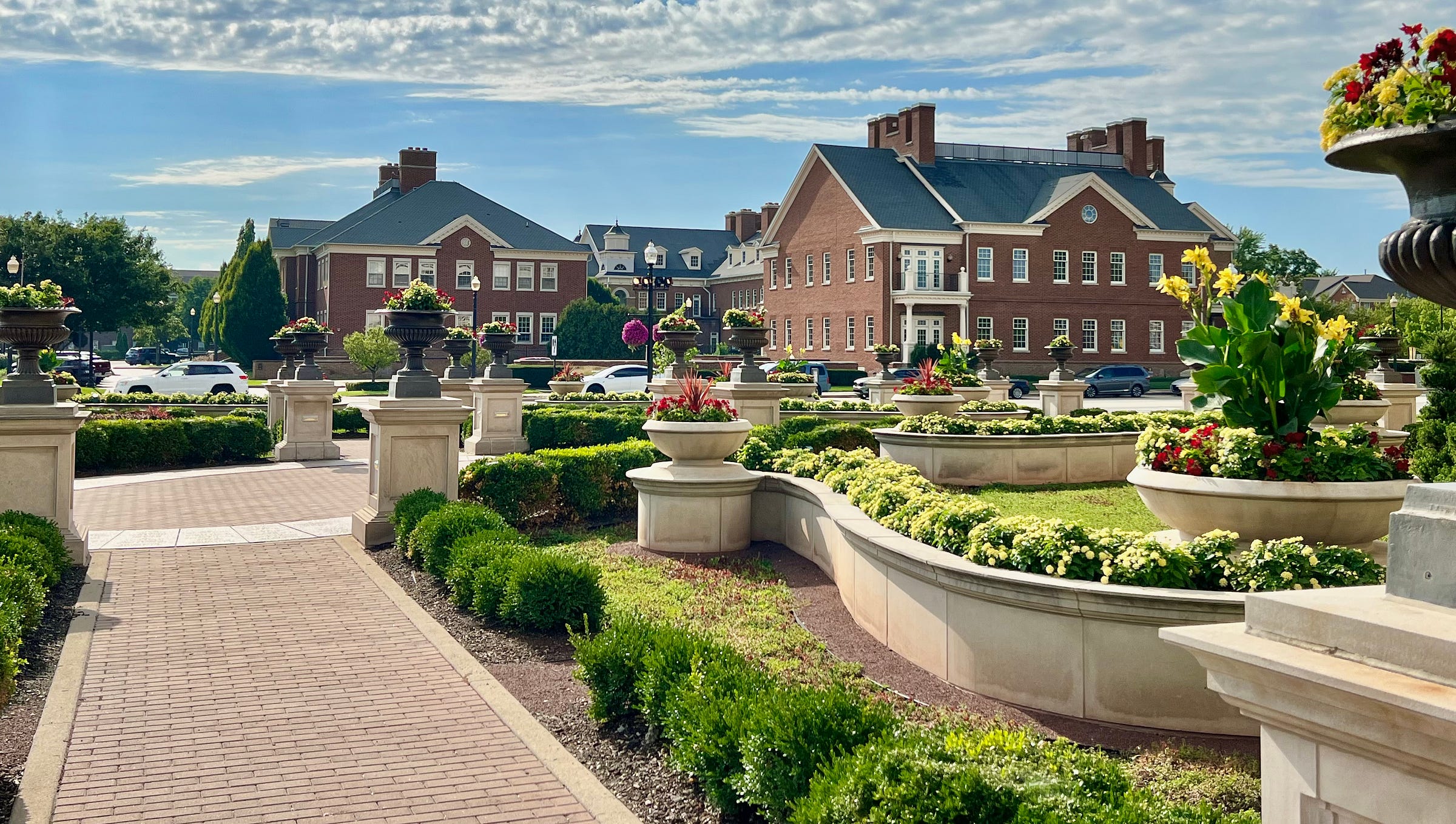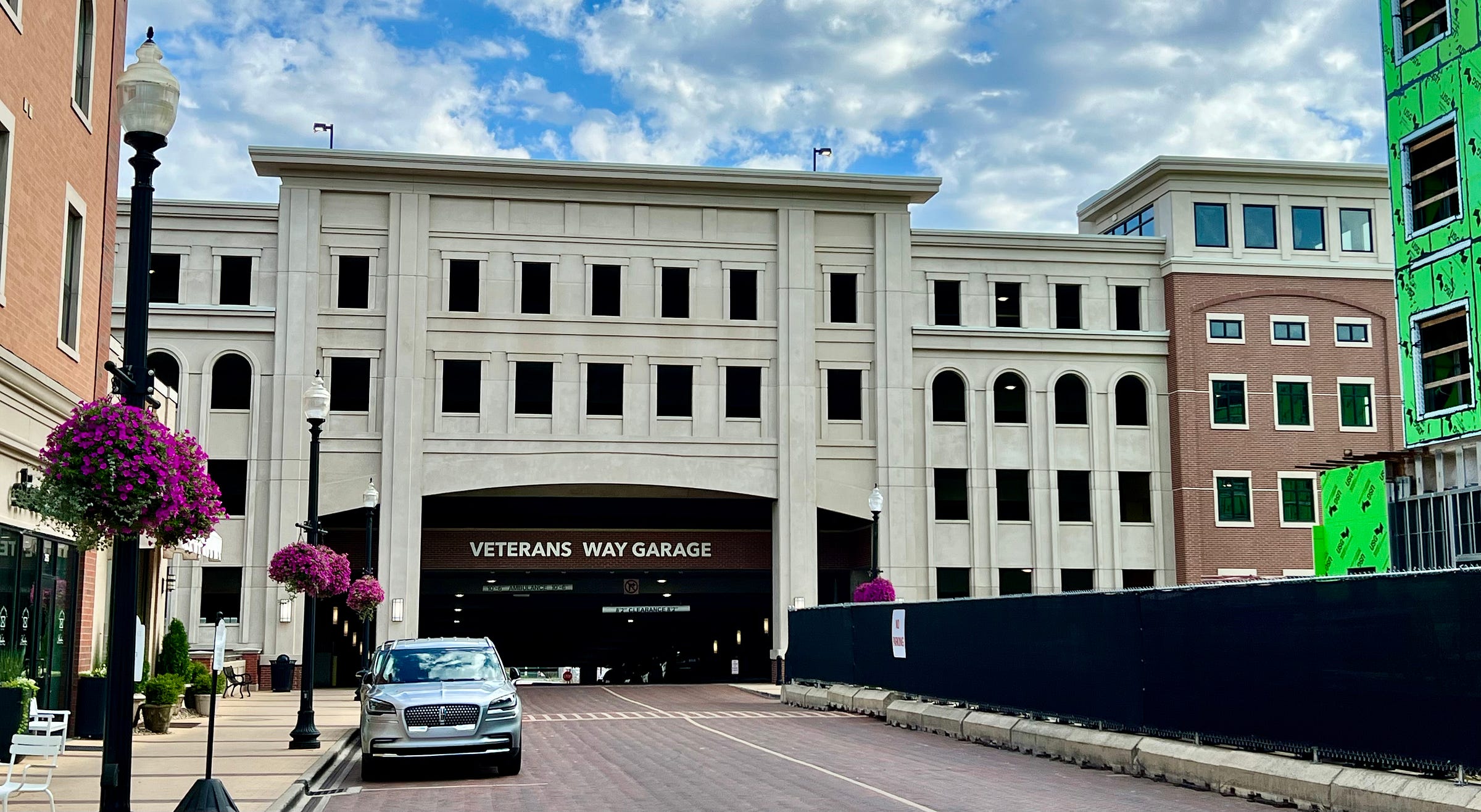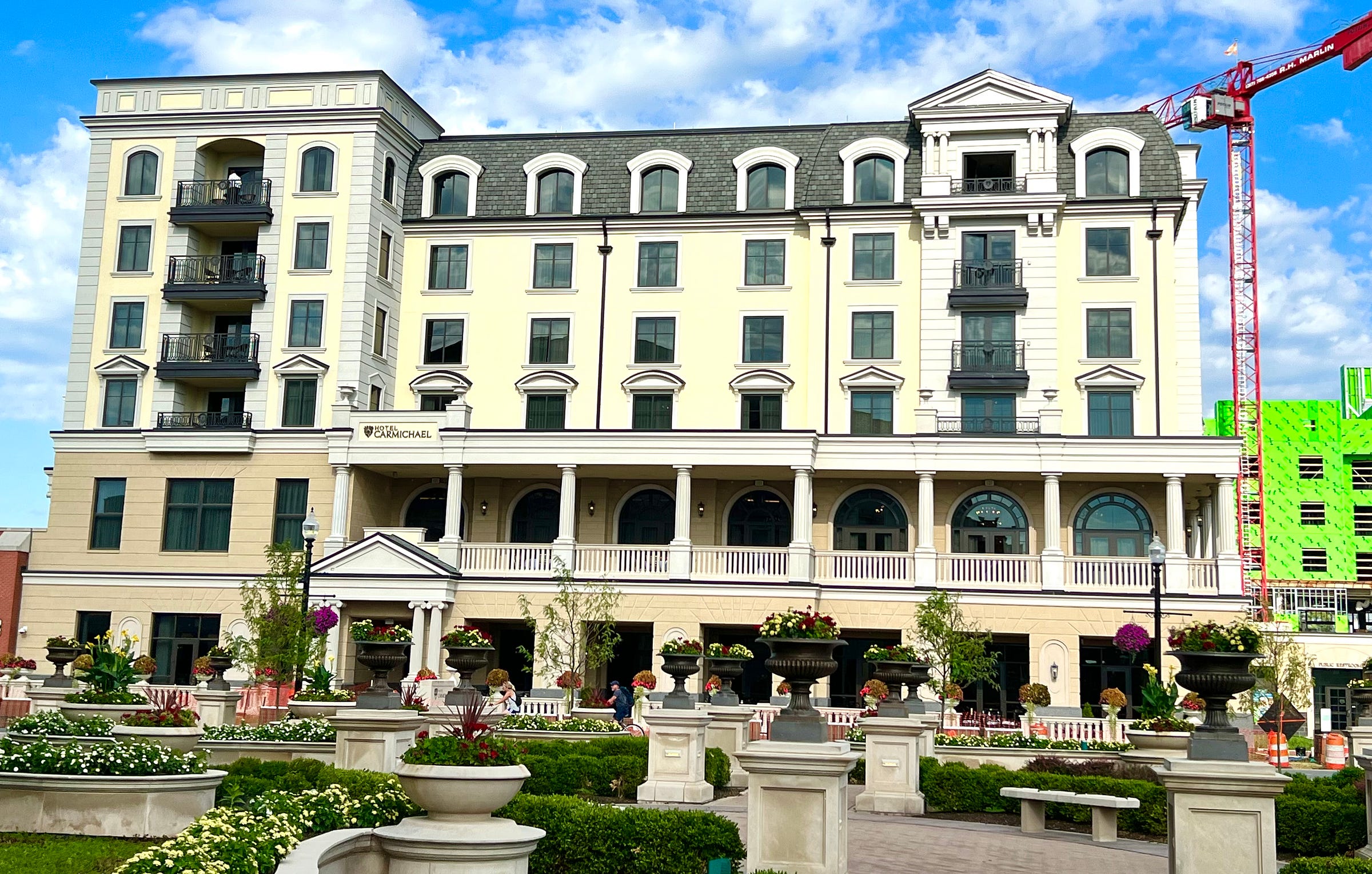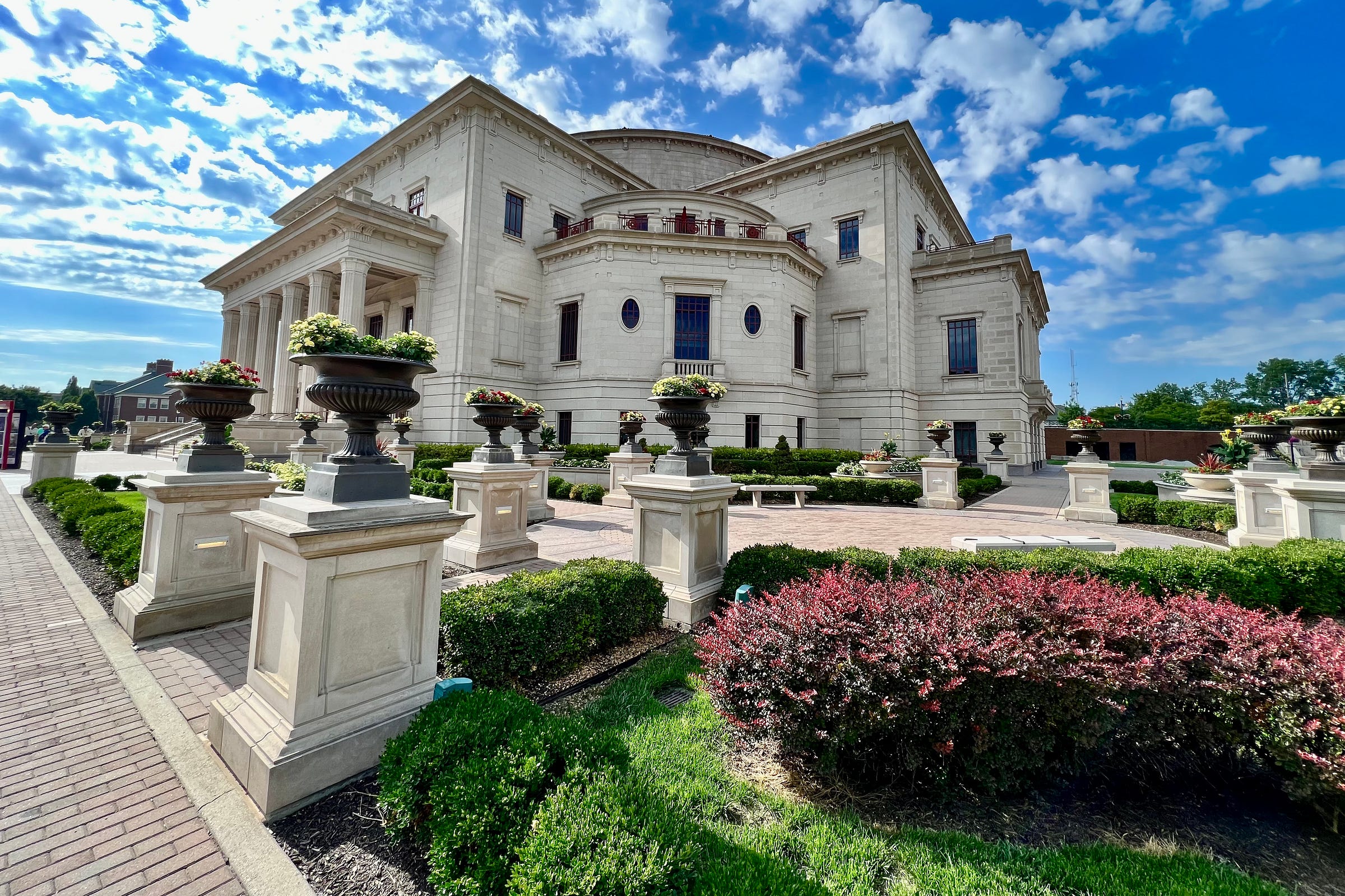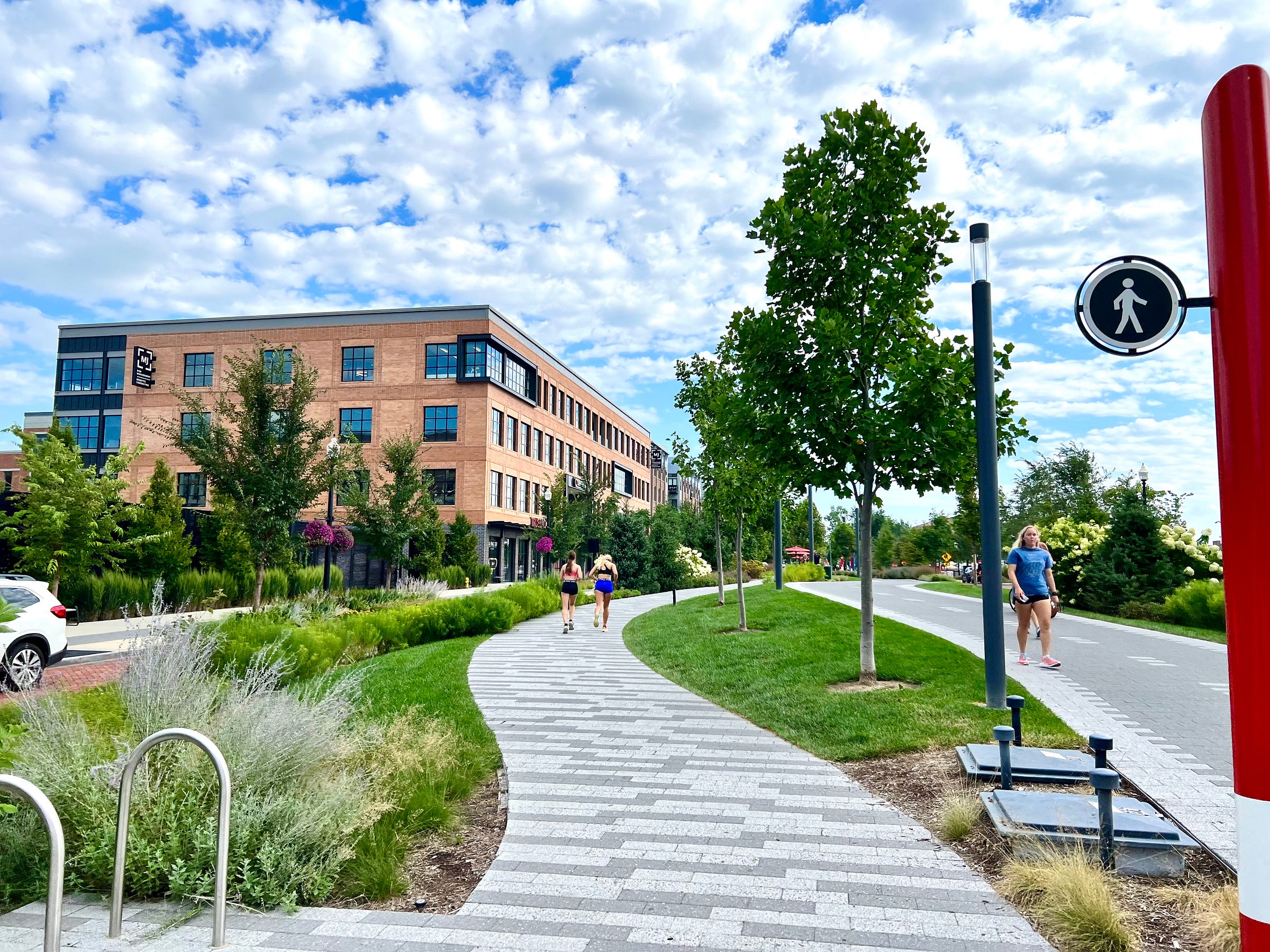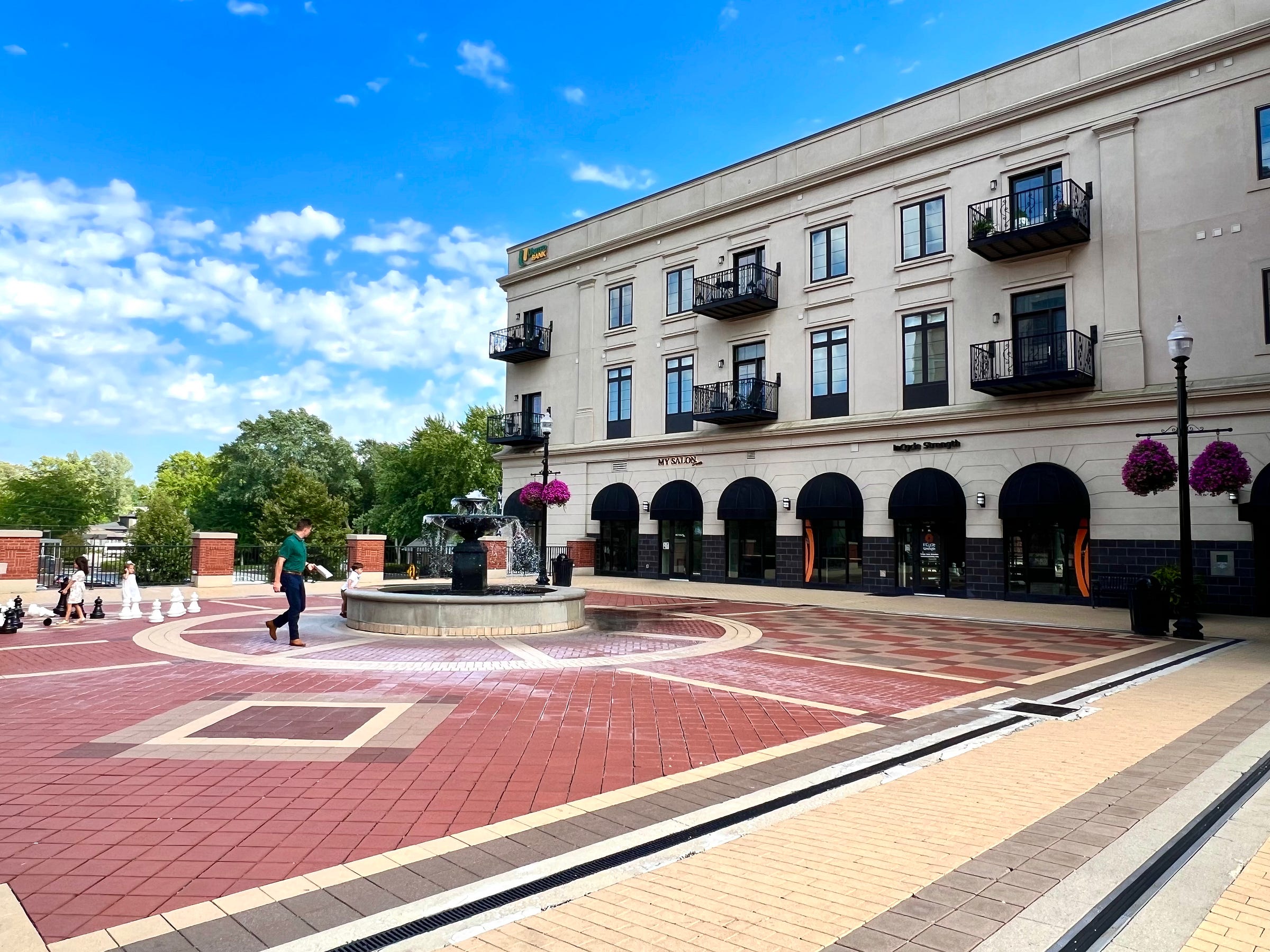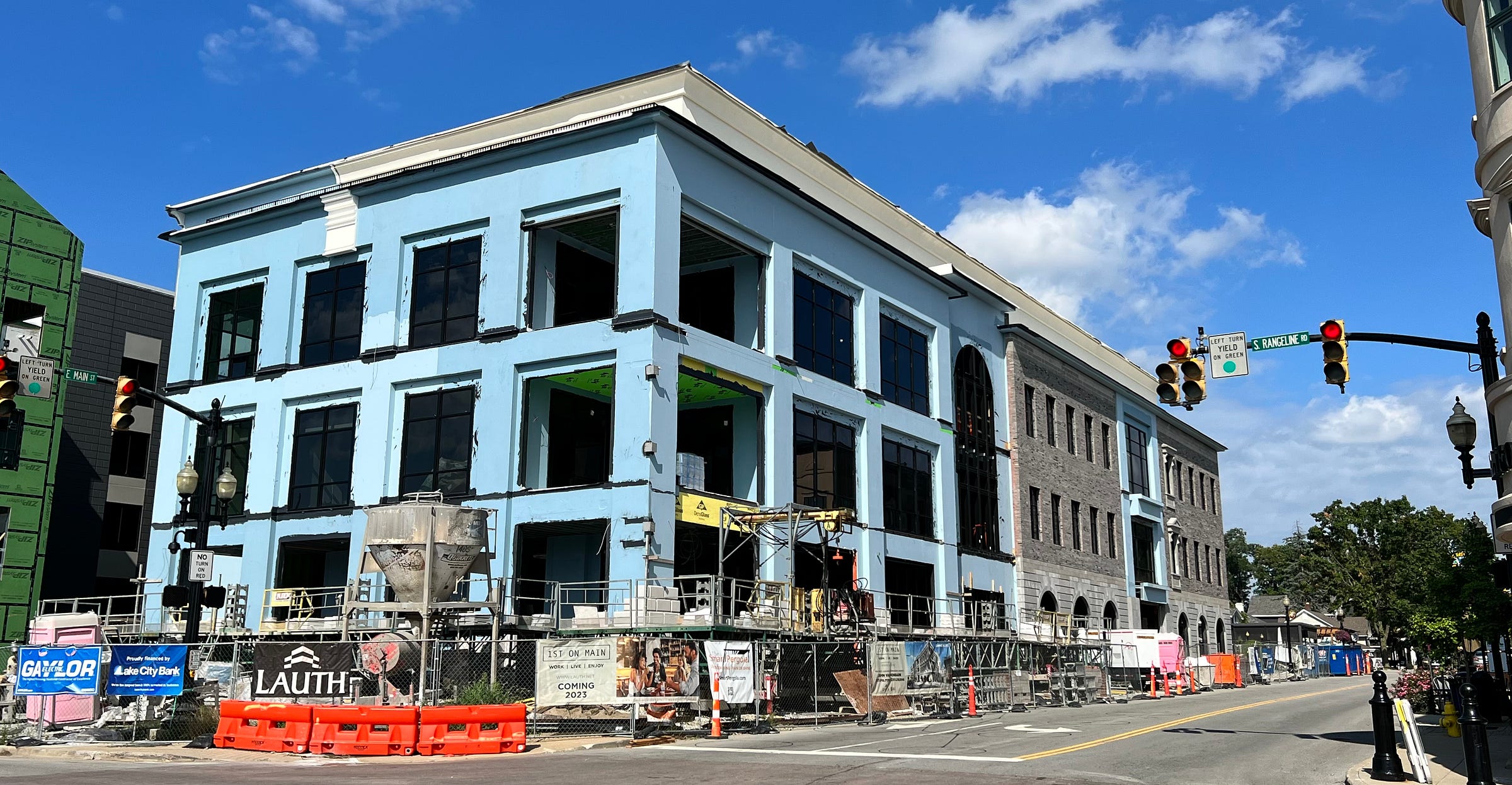Carmel, IN: A Desirable City, By Design
Walking through my hometown showed me that people don't hate change, they hate bad changes.
“Cities are either in an upward spiral of a downward spiral; there’s no in-between.”
-Mayor James Brainard
I spent this past week visiting family and relaxing in Carmel, IN. While walking through the Arts & Design District, I was shocked by the changes that had occurred in the past eight months. The city has greatly changed. And unlike most “improvements” in the modern world, these truly deserve the term. They make Carmel more delightful, more livable, and more desirable.
The primary change is the vast increase in the number of mixed-use buildings. The commercial space has increased, the residential space even more so, and both are more proximate to each other.
Nearly all of these buildings mimic traditional European styles. The mixture of multiple traditional styles gives the newer buildings a sense of agelessness that helps them integrate with the older buildings. You cannot look at a building and see its age in Carmel. Because of this, the buildings are resistant to becoming “dated.”
It is bizarre me, since I feel more connected to these new buildings that I have no memories of. And this is not merely an aesthetic connection. There are two separate bakeries owned by mothers of school friends. Walking by No Label at the Table, walking in, and seeing Ms. Henley is so enjoyable. It gives the entire block a sentimental meaning that it did not have before. And the mixed-use seems to allow small businesses to get along easier; while chatting in No Label at the Table, a young family stopped by to get their kids’ regular snack.
There are still new modernist buildings spattered throughout Carmel. They are tempered by a few factors: their relative rarity, their materials, and the surrounding greenery.
I don’t seek to be a tyrant. I am of the opinion that the proportion of modernist buildings in a city should roughly match the people’s tastes, which is few, but not nonexistent. Most of these buildings are also of red or yellow brick. Nearly every building in Carmel, and many of the new streets, heavily feature brick, so the modernist buildings integrated into their surroundings instead of standing out. Finally, the prevalent flowers, trees, and shrubbery soften the sharp angles. The modernist buildings seem more like well-maintained or converted factories than an alien spaceship. They suggest industry, if not art.
Local materials also integrate the traditional buildings with the city. I think one of the reasons modern people don’t always like traditional styles is because traditional architects go for foreign materials. This can make the traditional buildings feel out of place, for a reason many can’t place their fingers on.
This piece was inspired by the above YouTube suggestion for a documentary on Carmel and an interview with the mayor. I was shocked when mayor James Brainard said that banks would not finance mixed-use and beautiful buildings, as they saw them as “risky investments.” To solve this problem, Brainard resorted to tax-increment financing (TIF). This method uses projected future property taxes to back municipal bonds that are issued to pay for a project upfront. In medium-sized towns like Carmel, these can unlock a lot of money. A single project can increase property tax revenue by 50 times.
“We're flat: we have no mountains, we have no oceans. I joke, you know, we’re just like Paris. They have lousy weather, no mountains, and no oceans, either, but they did just fine.”
-James Brainard
That isn’t all. Brainard leveraged the city’s role as banker to require more beautiful designs from developers. Carmel has an architectural board which sets guidelines and reviews proposals. And they are fairly good at enforcing their standards. This proves that government can exercise its authority to improve the architectural standards of a community.
One of my favorite structures, ironically, was a concrete parking garage. It was not a sublime masterpiece, but for a parking garage, it was good. The simple windows and indentations gave it a character and depth completely foreign to parking garages. It was not perfectly integrated with the rest of the city—though I do not think parking garages can achieve this. It was, however, much more integrated than any parking garage I had seen, so I rank it highly.
For once, the buildings in a city were something you could really look at for a while. You could spend your time, eyes meandering across the facade, guessing at what was within, discovering new details, and appreciating the colors and shadows. Many restaurants now have outdoor seating. Almost every residence has a balcony. Flowers are absolutely everywhere. Many buildings didn’t quite have the spark of true genius, but I won’t complain when they are so vastly superior to their contemporaries.
What’s more, Friday, when I made this walking tour, was the most humid day of the week, and the sun was hot, yet I rarely felt the heat while walking. The bountiful trees and four and five-story buildings hid the mid-day sun and kept me cool.
I really liked what the city had done to the Monon trail. The Monon was a railroad that was converted into a walking and biking path some years ago. It stretches from the center of Indianapolis, up through the center of Carmel, right by downtown Carmel. Along the two block stretch in downtown Carmel, the Monon has been converted into a parkway. The park has separate pedestrian and biking trails, brick roads for cars or either side, and many games and amenities for residents, including fountains, a playground, a ping-pong table, a shuffle-board table, and a batchi ball pen. All were in use.
I also people-watched as we walked. The high school let out right as we drove into town, and the city was filled with middle and high school-aged kids walking around, socializing, and exercising. None were loud, obnoxious, or causing trouble. I conservatively estimate that some three dozen joggers passed us, and who knows how many bikers. It felt like an active and healthy town.
As the day progressed, more and more families appeared, eating dinner, walking, or riding bikes together. Some older couples window shopped. It felt like a community where you could spend your whole life.
I swear, though I cannot prove, that those who were not exercising were better dressed than before. Maybe this is because Carmel is wealthier, or because most had just got off work, but there seemed to be more women wearing sun dresses or designer clothes and men wearing dress shirts or suits. I would not be surprised if beautiful architecture encourages formal dress.
Carmels art really makes it stand out. For all of my life, there have been bronze statues of ordinary people on the sidewalks doing ordinary things. They are executed with a realness and skill that makes them so charming and enjoyable. And even better, the city has stuck to it and continues to put up more and more of these statues to this day. They include: the solider kissing the woman from the end of WWII, an elderly lady buying groceries, a ballerina, a jazz band, a policeman directing traffic, a woman sitting on a bench, a woman walking her dog, and many more that I do not remember.
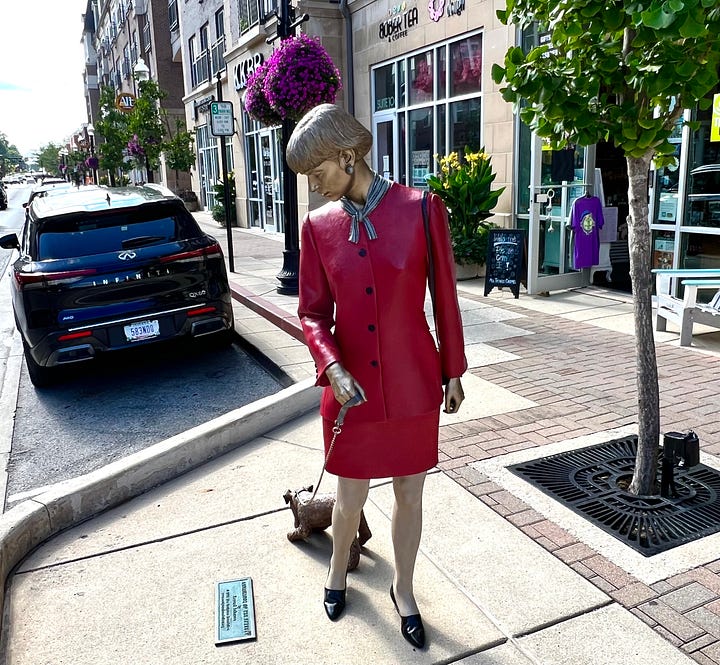
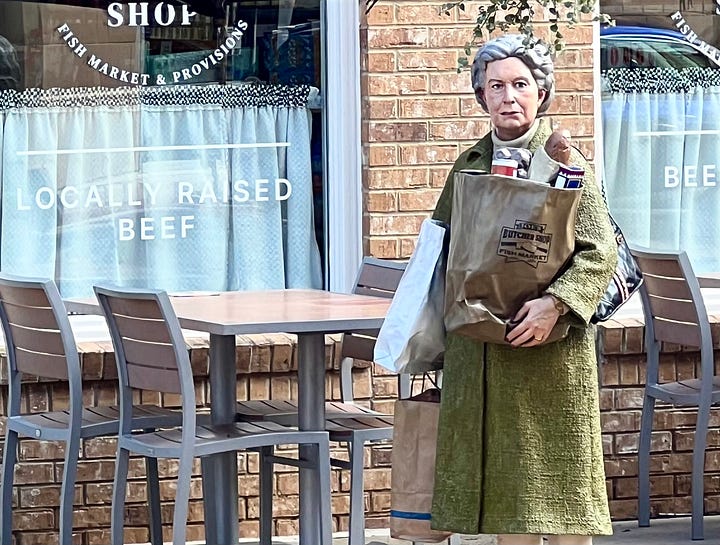
The city has added some hideous modern art in recent years, though this remains an exception, for now. Let’s hope they don’t ruin a good thing…
Overall, I was quite shocked how hopeful I felt while walking through the city. There is construction everywhere, but it does not feel like a nuisance. Instead, it fills me with excitement to see what new building rises up to compliment the city. The city filled me with joy and a vigor for life. And that is why I am dedicated to writing these articles.

